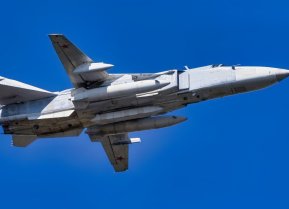The Virginia-Class Block II Submarine Is a Stealth Masterpiece
The Navy’s Virginia-Class Block II submarines represent some of the best stealth and undersea technology ever created.
Virginia-Class Block II submarine - One of the best on Earth: The U.S. Navy sports a proud tradition of building some of the best nuclear attack submarines on Earth, stealth platforms that Russia and China can only dream of. And that means the Virginia-Class Block II submarines carry on that proud tradition.
Introducing the Navy’s Virginia-class submarines
The Navy’s Virginia-class submarines represent the latest of the service’s nuclear-powered vessels.
Designed for a variety of littoral and open-ocean capabilities, the Virginia-class subs conduct anti-submarine warfare, intelligence-gathering operations, and other essential tasks.
Back in the early 1990s, the conception of these submarines was derived from the Navy’s Centurion Study. Initially, the Seawolf-class submarines were intended to replace the aging Los Angeles-class ships, however, production was nixed after only three of these submarines were ever produced as they were costly to build.
During the height of the Cold War, the U.S. allocated enormous resources to the Navy’s budget. The Soviets were advancing their own submarine fleet, which made the quality and quantity of America’s own vessels even more important. However, following the collapse of the USSR, this budget was slashed. Since each Seawolf submarine costs a staggering $3 billion per unit, the service looked toward its more economic Virginia-class alternatives.
Notably, this new class of submarines was the first Navy warships to be developed using 3D visualization technology like CATIA, which is run with computer-aided design, computer-aided engineering, computer-aided manufacturing and product lifecycle management.
In 2001, the first Virginia-class prototype was constructed by Newport News Shipbuilding and the General Dynamics Electric Boat Company. The two companies continue to manufacture this class of submarines today, as they are the only two shipyards able to build nuclear-powered submarines.
The Virginia-class subs are cost-friendly…
While the Virginia class ended up being the most cost-friendly alternative to its counterparts, the Navy had to work hard to trim its price tag.
The service instituted a cost-reduction program in the late 1990s to shave off roughly $400 million on the construction of each Virginia-class ship.
By 2008, the service penned a $14 billion contract with manufacturers Northrop Grumman and General Dynamics to supply eight additional submarines.
Also in 2008, the Navy commissioned its first ever Block II Virginia-class submarine - the USS New Hampshire. The main difference between the second variant boats and their predecessors is the position and number of sections onboard. Block II submarines are built in four sections, unlike the Block I submarines which are built in 10 sections. This construction difference amounts to roughly $300 million in savings per boat. Additionally, Block II boats were later fitted with a new software system that could monitor and diminish their electromagnetic signature when necessary, making these nuclear subs even more stealthier.
… and can pack a punch
As fast-attack submarines, the Virginia-class vessels are armed to the teeth. Each vessel is equipped with a dozen vertical launch system (VLS) tubes, which can launch 16 submarine-launched Tomahawk cruise missiles.
As detailed by Military Today, each of these missiles has a range of between 1-700km and are effective in attacking land and ship targets. Additionally, the Virginia-class vessels possess four 533mm torpedo tubes, which can be used to fire a total of 26 Mk 48 heavyweight torpedoes and Sub Harpoon anti-ship missiles.
Block II and Beyond: An overview of the Virginia-class variants that serve today
In addition to its heavy armament, the Virginia-class boats are able to perform a range of functions, not limited to, strike warfare, anti-submarine warfare, naval special warfare, covert mine warfare, intelligence gathering, surveillance, and reconnaissance missions. The latest Block V Virginia-class variant is even more equipped to carry out increasingly advanced mission sets.
These newer submarines will sport the Virginia Payload Module - an 84-foot long section fitted with four large-diameter, vertical launch tubes for carrying and launching additional Tomahawk missiles and other payloads.
Currently, 21 Virginia-class submarines have been commissioned by the Navy. Most existing Virginia vessels are from the earlier Blocks I, II, and III classes. The Block II boats include the USS New Hampshire, USS New Mexico, USS Missouri, USS California, USS Mississippi, and USS Minnesota. Just three Block IV variants have entered service, although more are under construction and expected to join its sister ships in the near future.
About the Author
Maya Carlin is an analyst with the Center for Security Policy and a former Anna Sobol Levy Fellow at IDC Herzliya in Israel. She has by-lines in many publications, including The National Interest, Jerusalem Post, and Times of Israel. You can follow her on Twitter: @MayaCarlin.


